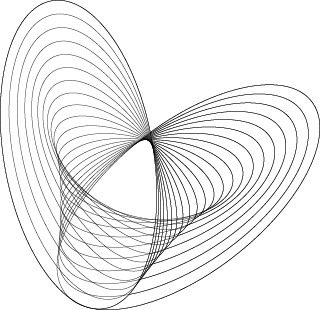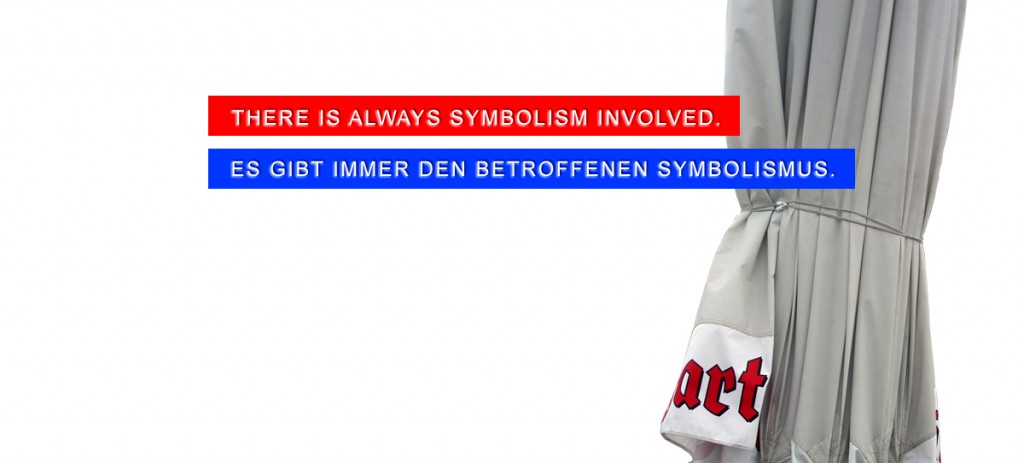SPAMMUSEUM.DE

Textarbeiten, Bilder, Objekte, Internet / texts, images, objects, internet
gegündet 1998, online seit 2007, neu gestaltet 2019 / founded 1998, online since 2007, redesigned 2019
SPAM = elektronisches Äquivalent zu unerwünschter Postwurfsendung
SPAM = electronic equivalent of unwanted mail box
Have a look at my online Spambookmagazine >>
Statement der Künstlerin:
Anfang der 90er Jahre hatte ich meine erste E-Mail-Adresse und schon kurze Zeit später erhielt ich Spam-E-Mails. Ich war irritiert und fasziniert zugleich. Die Betreffe waren wohlklingend und die Inhalte voller Fülltexte, meist in Englisch. Ich begann, die Spams zu archivieren. Im Laufe der Jahre entstand so eine riesige Sammlung. Übersetzt mit dem frühen Google Translator, erhielten die deutschen Texte eine überraschende und seltsam altertümlich klingende Sprache. Meiner künstlerischen Arbeitsweise entsprechend habe ich Textcollagen erstellt, die durch die umständliche oder fehlerhafte Übersetzung eine eigentümliche Poesie offenbaren. Entstanden sind Liebesgedichte, Erzählungen, Ratgeber uvm. Viele Texte korrespondieren mit Zeichnungen, Objekten oder Fotografien und sind, ausgedruckt auf Prägeband, Teil von Installationen in Ausstellungen.
In den Spammails, die ich über all die Jahre erhalten habe, geht es meist um Liebe, Beziehungen und natürlich Sex. Viele der Inhalte sind irgendwie anarchistisch und sehr direkt, aber gleichzeitig auch total nutz- und sinnlos. Selbst die Intention solcher Nachrichten ist meist unverständlich. Die Namen der Absender, die Betreffe und die Texte sind alle Fakes, aber dafür in einer enormen Bandbreite von Themen.
Im Jahr 2014 erreichten mich zum Beispiel eine Zeit lang unglaubliche Mengen von Kontaktanzeigen, verfasst von Frauen, die einen reichen, attraktiven, humorvollen und liebevollen Mann zum Heiraten suchten und alle Klischees rund um dieses Thema bedienten. All diese habe ich verwendet, mit Zeichnungen, Tondateien und Animationen ergänzt und online auf meine SPAMMUSEUM-Website geschickt. Sie korrespondieren sehr gut mit all dem anderen Unsinn über Glück, Scheitern, Wirtschaft und allem sonst, was man noch so wissen muss.
Mein SPAMMUSEUM ist seit 2007 online http://spammuseum.de und wurde 2019 neu gestaltet (full html). Es ist ein Raster mit (bisher) 625 Zellen. Jede hat ihren eigenen Inhalt und man kann zwischen kleinen Gif-Animationen zu anderen ‚Themen‘ und Kategorien springen. Hier ist der Ort, an dem man sich fragt, warum man nicht mit Speck verheiratet sein kann oder einen schönen Tag für einen Furz genießen darf. Und wussten Sie überhaupt die Wahrheit über „Franklins letzte Reise nach der großen Nordexpedition“? Inhalieren Sie den Atem der Kartoffel und holen Sie sich einen personalisierten Glücks-Spam-Keks. Glauben Sie Perla, die Kunst verehrt und weiß, dass Schönheit die Welt retten wird.
Mein Spammuseum ist eine Webseite, die mit „Leere“ gefüllt ist. Viele Zellen warten noch auf ihre Bearbeitung. Nach mehr als 25 Jahren Sammeln, Zusammensetzen, Wiederverwenden und Neuschaffen ist es vielleicht an der Zeit, das Projekt irgendwann bald zu beenden. Werbung in sozialen Medien hat das klassische Format der Spammails überholt und Phishing ist dort viel einfacher geworden. Mein SPAMMUSEUM ist bereits ein Relikt einer digitalen Kommunikation, die vor dem web2.0 genutzt wurde, es ist sozusagen ziemlich retro. Komplett gefüllt wäre hiermit ein Zeitvertreibsuniversum von Junk konserviert und es mir auch – endlich – erlauben, das Projekt loszulassen.
Spam-Kunst-Konzept:
Ausgestattet mit der aktuellsten Antivirensoftware und externen Sicherheitskopien traue ich mich, einige Emails zu öffnen und ein bisschen darin zu stöbern. Neben den unzähligen Werbemails finden sich hin und wieder Spams mit sinnlosen Texten, die nach der Herausfilterung der schönsten Zeilen eine eigentümliche Poesie offenbaren. Dieser unendliche Reichtum an Formulierungen, poetischen und philosophischen Gedanken, sowie die Sinnlosigkeit der breiten Versendung durch das Internet findet Entsprechung in Bildern, Objekten, Textcollagen und Schriftbändern.
Seit 1998 sammle, lese und archiviere ich Spam-Mails. Früher – vor dem Web 2.0 – wurden mit unsinnigen Fülltexten die Spamfilter ausgetrickst. Aber auch heute noch gibt es umfangreiche Textfüller, die oft wie ein Muster aussehen. Ich habe Tausende und Abertausende von nützlichen Spam-Mails und verwende sie für Fake-Stories durch Resampling oder für textbasierte, analoge Installationen.
Laut Statistik (Quelle: Statista) lag die geschätzte Zahl der Spam-E-Mails, die 2011 weltweit versendet wurden, bei rund 42 Milliarden. Wenn wir alle diese Spam-Mails auf einer A 4 Seite mit einer Breite von 21 cm ausdrucken und zusammensetzen würden, wäre die Länge aller Seiten 8820000 km. Das ist etwa die Hälfte der Entfernung von der Erde zur Sonne oder 23 Reisen zum Mond. Wenn man bedenkt, wie viele Spam-E-Mails seit Bestehen des Internets jemals weltweit versendet wurden, scheint sich dieser Weg nahezu unendlich zu erstrecken. Für mich ist dieser glückliche Umstand einer scheinbar endlosen Ressource eine unschätzbare Materialquelle.
Die heutigen Spam-Mails passen sich den neuesten Anti-Spam-Filtern an und halten den ewigen Wettbewerb zwischen Spammern und Anti-Spam-Entwicklern aufrecht.
Das Spammuseum ist seit 2007 online, wurde 2019 neu gestaltet und wächst weiter.
Entdeckt das SPAMMUSEUM hier online: http://spammuseum.de
(funktioniert am besten mit einem größeren Bildschirm)
Artist Statement:
At the beginning of the 90s, I got my first email address and, already a short time later, I received spam emails. I was irritated and fascinated at the same time. The subjects were melodious and the contents full of filler texts, mostly in English. I began to archive the spams. Over the years, a huge collection emerged. Translated with the early Google Translator, the German texts took on a surprising and strangely ancient-sounding language. In keeping with my artistic way of working, I created text collages that reveal a peculiar poetry through the awkward or faulty translation. I have sampled love poems, stories, guidebooks and much more. Many texts correspond with drawings, objects or photographs and, printed out on embossed tape, are part of installations at exhibitions.
The spammails which I received over all these years are mostly about love, relationships and sex, of course. Lots of the content is kind of anarchist and very direct, but at the same time totally use- and senseless. Even the intention of such messages is mostly incomprehensible. Names of sender, the subjects and texts are all fake, but that in a huge range of topics.
In 2014, for example, there was a timeframe when I received an incredible amount of love ads from women who were looking for a rich, attractive, humorous and loving man to marry, serving all the clichés around that theme. I used them all, prepared drawings, sound files and animations and send them online to my SPAMMUSEUM website. They correspond very well together with all that other nonsense about fortune, failure, trading and everything else you need to know.
Since 2007 my SPAMMUSEUM is online http://spammuseum.de and has been redesigned (fully html) in 2019. It is a grid with (so far) 625 columns. Each one has its own content and you can jump between little gif animations to other ‘themes’ and topics. It’s a place to ask yourself why you can’t be married to bacon or enjoy a lovely day for a fart. And did you even know the truth about ‘Franklin’s Last Voyage after the Great Northern Expedition’? Take in the breath of the potato and get a personalized fortune spam cookie. Believe Perla, who adores art and knows that beauty will save the world.
My spammuseum is a webpage filled with nothingness. A lot of columns are still waiting for editing. After more than 25 years collecting, sampling, reusing and newly creating it might be a good time to bring the project to an end soon. Advertising in social media has overtaken the classical format of spammails and phishing became much easier there. My SPAMMUSEUM is already a relict of a digital communication that has been used before web2.0, it’s so called pretty retro. Completely filled, this would preserve a pastime universe of junk and also – finally – allow me to let go of the project.
Spam-Art-Concept:
Equipped with the most current anti-virus software, I dare to open some emails and to rummage around in them a bit. Time and again, alongside the countless adverts, there are spams with meaningless texts that, after the most beautiful lines have been filtered out, reveal a peculiar poetry. This endless abundance of formulations, poetic and philosophical thoughts, as well as the pointlessness of blanket mailing over the internet – all this flows into my work and finds its counterpart in images, objects, text collages and text bands.
Discover the SPAMMUSEUM online here: http://spammuseum.de
(works best with bigger screen)



